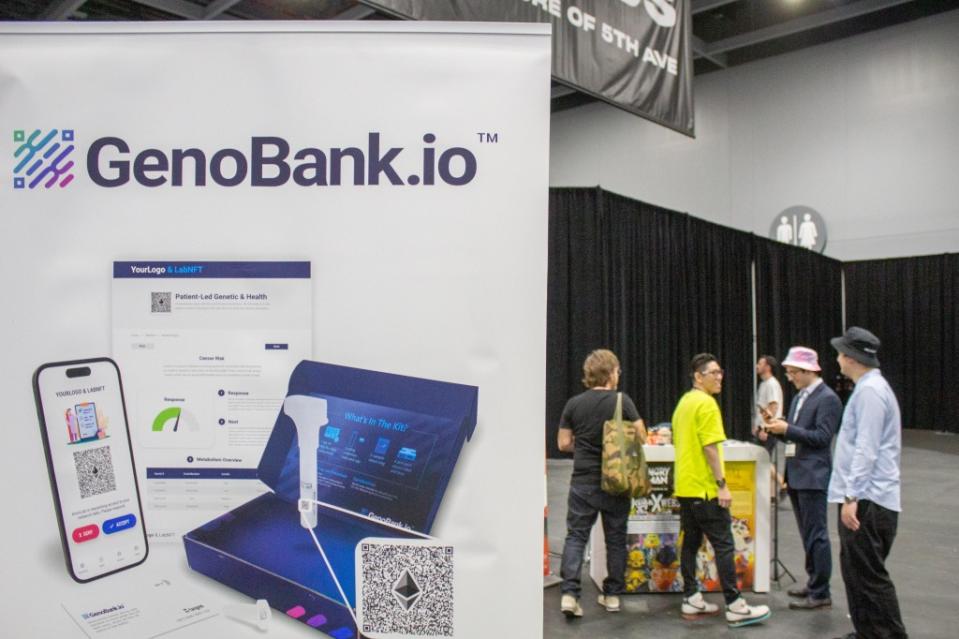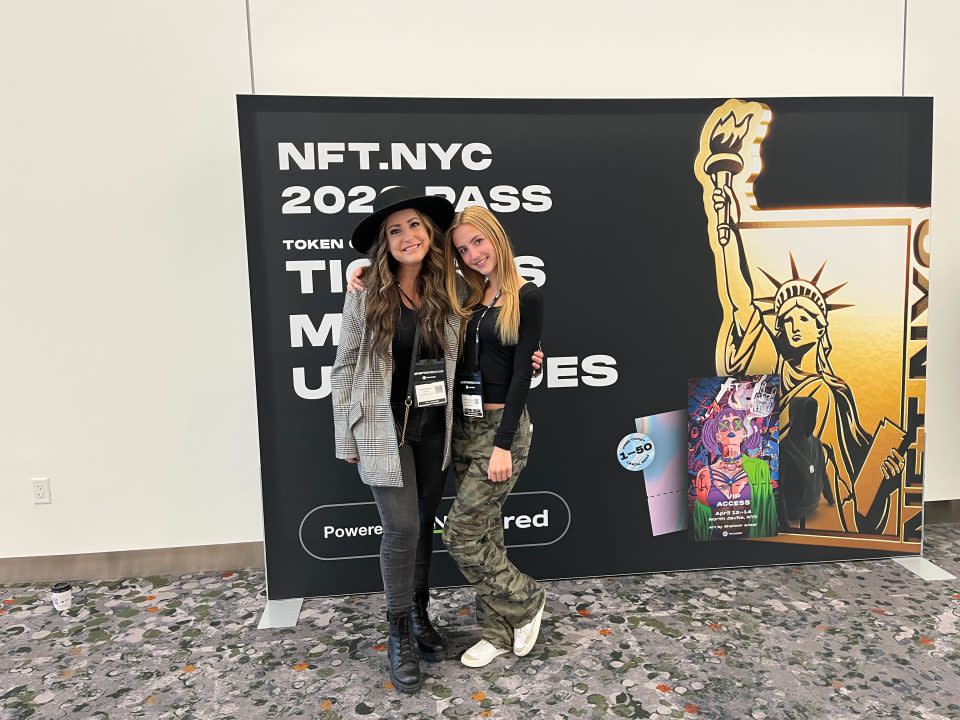The Most Surprising Ways People Use NFT at NFT.NYC
From pixelated monkeys to Donald Trump trading cards, there’s no shortage of ideas in the Web3 world. At NFT.NYC, this power of creativity was on full display—for better or for worse.
More from Fortune: 5 Side Hustles Where You Can Make Over $20,000 Per Year – All While Working From Home Do you want to earn extra money? This CD has an APY of 5.15% right now. Are you buying a house? Here’s how much you’ll save. This is how much money you need to make annually to comfortably buy a $600,000 house
Here are some of the most eyebrow-raising projects Fortune saw this week at the Javits Center in Hudson Yards.
Your DNA is now on the blockchain

On the conference’s exhibit floor, Daniel Uribe, co-founder and CEO of GenoBank.io, presented to passers-by what he sees as a necessary corrective to healthcare: a DNA test kit whose results reside on the blockchain.
Stand behind a white table with a test kit prominently displayed, Uribe said Fortune that his startup, founded in 2018, first offered researchers and labs a method to verify the authenticity of tests by recording results as NFTs. (GenoBank.io also says, somewhat surprisingly, that it confirms the origin of coffee beans.)
Now, with the rise of AI, the company has pivoted. Any customer can send GenoBank.io a test sample, and the company stores a reference to the user’s DNA in a public ledger. From there, customers can ask ChatGPT about their genomes, Uribe said. For example, if people are concerned about their susceptibility to type 2 diabetes, they can ask ChatGPT for help.
“What it does really well is it can help you create a list of relevant regions in your DNA that are specifically related to a particular disease,” Uribe told Fortune. GenoBank.io will then search through people’s DNA and return how likely they are to develop, for example, Alzheimer’s or another disease with previously established genetic links. “You own the data and you can print your records if you want,” he said. “Or you can just delete the session in your browser.”
And his startup gives people the ability to license their test results — including their genetic code — as they see fit.
“I’m not incentivizing people to sell their data,” he said Fortune. “But obviously they could do it. It’s Web3 – anyone can do whatever they want.”
Save bees with NFTs

Brooklynn Bailey, aka BrookBee, is 14 years old and hungry to make a difference. And her tools of choice are NFTs.
The high schooler from just outside of Los Angeles is the creator of the Bee Better collection, a series of digital collectibles that donates 50% of each sale to saving bees. The donations go to The Bee Girl Organization (BGO), a non-profit organization focused on bee habitat conservation.
She has already done quite well. Her first non-fungible token, a one-of-one called the Queen Bee NFT, sold for $3,000.
When deciding which issue to focus on, she chose bees because of how important they are to pollination—and how endangered they are.
“I love animals and I thought I can help them in some way through the digital world. I don’t see many people doing that, she said.
With the support of her mother, Desiree Shank, Bailey has also started a course that people can buy to learn how to create their own NFTs and start a digital business.
Bailey’s bee-themed NFTs are available on OpenSea for 0.2 Ether. Her worker bees have frugal insects, some with hats or glasses, and hold a cup of coffee with one of their six legs.
Bailey created some of the first artwork for her NFTs on the 5.42-inch screen of her iPhone 12 mini using a free app. She later upgraded to an iPad and Apple Pencil to do her work, but she said it starting without professional tools or software hopefully encourages other kids who want to do the same.
“It’s never too early or too late to start your NFT journey,” she said Fortune.
A book full of NFTs

While the book industry is understandably not known for its innovation, some independent authors are trying to change that.
After years of working with traditional publishers, including Simon & Schuster, author Rionna Morgan turned to NFTs as the newest medium for her writing.
The traditional publishing world is full of restrictions, but NFTs gave her more creative opportunities. For her latest work, The seven love stories, Morgan teamed up with four illustrators who designed art to accompany her writing. Each illustrator receives 25% of the sales for each of the books he or she has worked on.
“I’ve literally never had this much fun,” she shared Fortune.
And because the seven stories are packaged as NFTs, the illustrators automatically get a percentage of each sale indefinitely, without Morgan having to send out individual checks.
Scarcity is another way NFTs help writers. In a talk titled “Books and the Blockchain,” Web3 writer Greg Younger said NFTs could bring back the idea of first editions for books. (For Morgan’s project, only 1,111 versions of each story can be minted, for a total of 7,777 versions across all seven works.)
While first editions of famous books such as The Great Gatsby can sell for hundreds—or sometimes thousands—of dollars, the same cannot be said for first-release e-books. With NFTs, junior claims, first editions of books can be published, sold, and later verified as authentic: “All these wonderful authors have written books, and there’s a minimum amount you can collect today, and once they’re collected , there is not going to be another version. They become collectibles.”
All these ideas have culminated in a new category: Write3.
This story was originally featured on Fortune.com
More from Fortune:
5 Side Hustles Where You Can Make Over $20,000 Per Year – All While Working From Home
Do you want to earn extra money? This CD has an APY of 5.15% right now
Buying a house? Here’s how much you can save
This is how much money you need to earn annually to comfortably buy a $600,000 home


![The crypto market may witness another crash if Bitcoin [BTC] falls under.. The crypto market may witness another crash if Bitcoin [BTC] falls under..](https://www.cryptoproductivity.org/wp-content/uploads/2023/03/johannes-plenio-RwHv7LgeC7s-unsplash-1000x600-520x245.jpg)